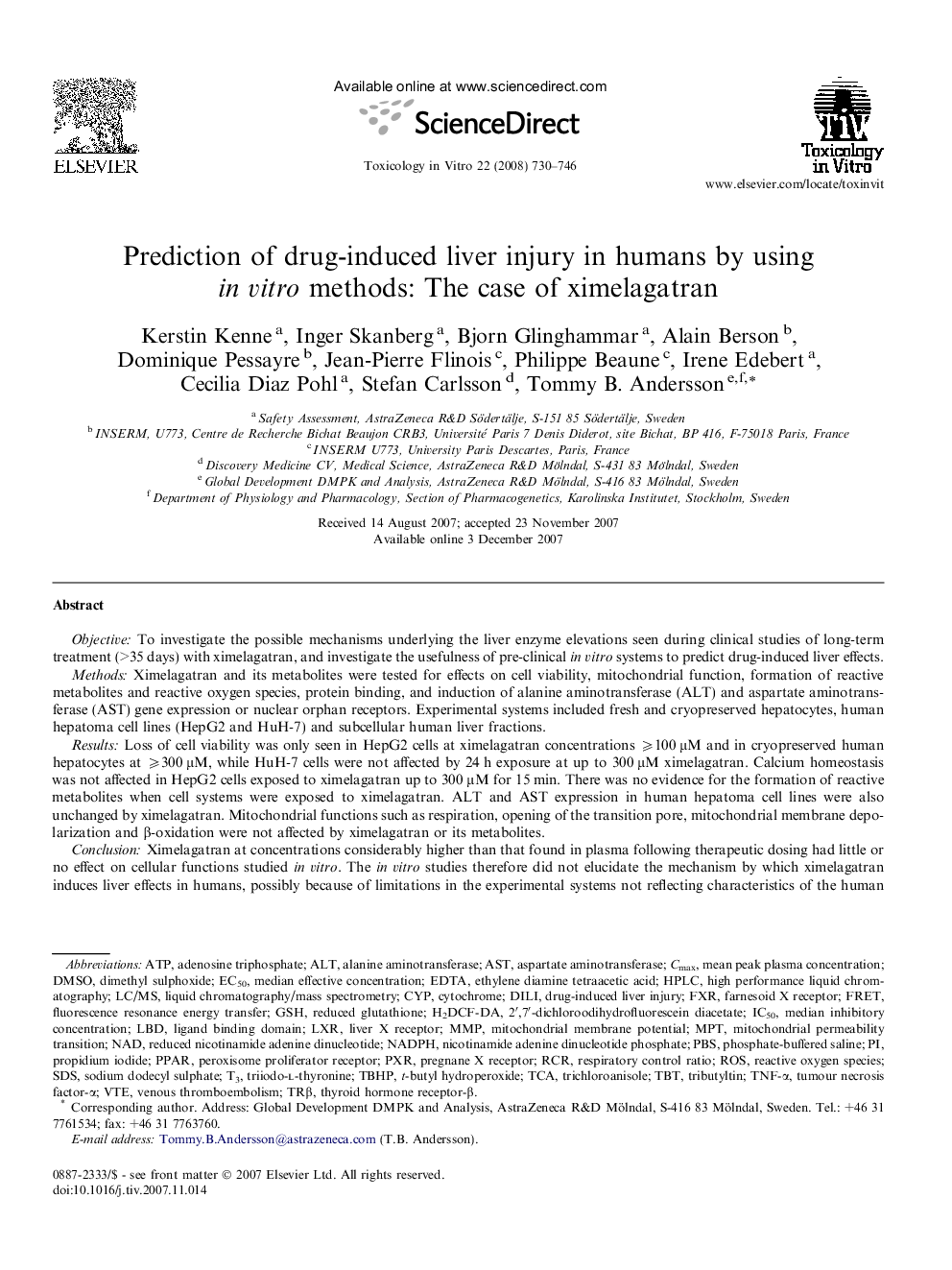| Article ID | Journal | Published Year | Pages | File Type |
|---|---|---|---|---|
| 2603433 | Toxicology in Vitro | 2008 | 17 Pages |
Objective: To investigate the possible mechanisms underlying the liver enzyme elevations seen during clinical studies of long-term treatment (>35 days) with ximelagatran, and investigate the usefulness of pre-clinical in vitro systems to predict drug-induced liver effects.Methods: Ximelagatran and its metabolites were tested for effects on cell viability, mitochondrial function, formation of reactive metabolites and reactive oxygen species, protein binding, and induction of alanine aminotransferase (ALT) and aspartate aminotransferase (AST) gene expression or nuclear orphan receptors. Experimental systems included fresh and cryopreserved hepatocytes, human hepatoma cell lines (HepG2 and HuH-7) and subcellular human liver fractions.Results: Loss of cell viability was only seen in HepG2 cells at ximelagatran concentrations ⩾100 μM and in cryopreserved human hepatocytes at ⩾300 μM, while HuH-7 cells were not affected by 24 h exposure at up to 300 μM ximelagatran. Calcium homeostasis was not affected in HepG2 cells exposed to ximelagatran up to 300 μM for 15 min. There was no evidence for the formation of reactive metabolites when cell systems were exposed to ximelagatran. ALT and AST expression in human hepatoma cell lines were also unchanged by ximelagatran. Mitochondrial functions such as respiration, opening of the transition pore, mitochondrial membrane depolarization and β-oxidation were not affected by ximelagatran or its metabolites.Conclusion: Ximelagatran at concentrations considerably higher than that found in plasma following therapeutic dosing had little or no effect on cellular functions studied in vitro. The in vitro studies therefore did not elucidate the mechanism by which ximelagatran induces liver effects in humans, possibly because of limitations in the experimental systems not reflecting characteristics of the human hepatocyte, restricted exposure time, or because the primary mechanism for the observed clinical liver effects is not on the parenchymal liver cell.
